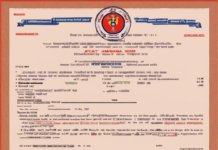Introduction
In the realm of human resource and employee management, SBI HRMS (Human Resources Management System) emerges as a critical tool for efficient handling of various employee-centric tasks within the State Bank of India. As one of the largest banking institutions in India, SBI relies on HRMS to streamline its employee data management, payroll processing, leave management, and other essential functions. This comprehensive guide aims to delve into the intricacies of SBI HRMS, its features, benefits, and how it simplifies the complex HR processes within the organization.
Understanding SBI HRMS
SBI HRMS is a centralized online portal that provides a host of services related to human resources and employee management. It caters to the diverse needs of employees, HR personnel, and management by offering a seamless platform for various activities, such as payroll management, salary slips, leave requests, training programs, attendance tracking, and more. The system is designed to enhance efficiency, transparency, and accessibility in managing the workforce within SBI.
Features of SBI HRMS
-
Employee Self-Service (ESS): One of the standout features of SBI HRMS is the ESS module, allowing employees to access and manage their personal information, apply for leaves, check salary details, and update contact details conveniently.
-
Manager Self-Service (MSS): The MSS feature enables managers to handle a range of tasks related to their team members, including leave approvals, performance appraisals, and monitoring attendance, fostering better managerial control and decision-making.
-
Payroll Processing: SBI HRMS streamlines the payroll process by automating computations, deductions, and tax-related calculations, ensuring accurate and timely disbursement of salaries to employees.
-
Leave Management: The system simplifies leave management by providing a platform for employees to apply for different types of leaves, track leave balances, and for managers to approve or reject leave requests efficiently.
-
Performance Appraisal: SBI HRMS facilitates the performance appraisal process by providing a structured framework for setting goals, conducting evaluations, and providing feedback to employees, promoting a culture of continuous improvement.
-
Training and Development: The system allows for the creation and management of training programs, tracking employee participation, and monitoring skill development initiatives, contributing to the overall growth and development of the workforce.
-
Document Management: SBI HRMS acts as a centralized repository for storing and accessing employee-related documents, such as offer letters, performance reviews, training certificates, ensuring data security and easy retrieval when needed.
Benefits of SBI HRMS
- Efficiency: By automating routine HR tasks, SBI HRMS boosts operational efficiency, saving time and resources that would otherwise be spent on manual processes.
- Accuracy: The system reduces the margin of error in payroll processing, leave management, and other activities, ensuring precise calculations and compliance with policies.
- Transparency: SBI HRMS promotes transparency by providing employees with access to their information and enabling managers to make informed decisions based on real-time data.
- Cost-Effective: The implementation of HRMS leads to cost savings through reduced paperwork, streamlined processes, and better resource utilization.
- Employee Satisfaction: With self-service options, timely salary disbursal, and easy access to information, SBI HRMS enhances employee satisfaction and engagement levels.
Challenges in Implementing SBI HRMS
While SBI HRMS offers a plethora of advantages, its implementation may present certain challenges, including:
- Resistance to Change: Employees and managers accustomed to traditional processes may resist the shift to a digital platform, necessitating change management strategies.
- Training Needs: Adequate training and support are crucial to ensure all users are familiar with the system functionalities and can utilize them effectively.
- Data Security Concerns: Safeguarding sensitive employee data is paramount, requiring robust security measures, data encryption, and access controls to prevent unauthorized breaches.
- Integration Complexity: Integrating HRMS with existing systems and ensuring seamless data flow across different modules can be complex and may require professional expertise.
FAQs (Frequently Asked Questions)
-
How do employees access SBI HRMS?
Employees can log in to the SBI HRMS portal using their unique credentials provided by the organization. The portal can be accessed from any device with an internet connection. -
Can employees update their personal information on SBI HRMS?
Yes, employees can update certain personal details, such as contact information, emergency contacts, and banking details, through the ESS module on the HRMS portal. -
How are leave requests processed through SBI HRMS?
Employees can submit leave requests through the self-service portal, which are then forwarded to their respective managers for approval. Managers can review, approve, or reject the requests within the system. -
Is SBI HRMS compatible with mobile devices?
Yes, SBI HRMS is designed to be mobile-responsive, allowing employees and managers to access the portal and perform various tasks on smartphones and tablets. -
How secure is the data stored in SBI HRMS?
SBI HRMS prioritizes data security and employs robust measures, such as encryption, access controls, and regular security audits, to safeguard employee information and prevent unauthorized access. -
Can employees view their past payslips on SBI HRMS?
Yes, employees can access and download their past payslips from the HRMS portal, enabling them to track salary details and deductions for different pay periods. -
Are training programs managed entirely through SBI HRMS?
SBI HRMS facilitates the creation, tracking, and management of training programs; however, the actual delivery of training sessions may involve external platforms or trainers, depending on the program’s requirements. -
How does SBI HRMS streamline performance appraisals?
The performance appraisal module within SBI HRMS allows HR personnel and managers to set performance goals, evaluate employee performance against predefined criteria, and provide feedback and ratings within the system. -
Can SBI HRMS generate customized reports for management decision-making?
Yes, SBI HRMS offers reporting functionalities that enable users to generate custom reports on various HR metrics, including attendance, leave balances, training completion rates, and performance evaluations, to support informed decision-making. -
Does SBI HRMS support multi-level approval workflows for different processes?
Yes, SBI HRMS allows for the configuration of multi-level approval workflows for processes such as leave requests, expense claims, and performance appraisals, ensuring appropriate review and authorization at each stage.
In conclusion, SBI HRMS stands as a pivotal tool in modernizing and optimizing HR operations within the State Bank of India, empowering employees, enhancing managerial oversight, and driving organizational efficiency. By leveraging the features, benefits, and best practices associated with HRMS, SBI continues to elevate its employee management practices and deliver value across the organization.










